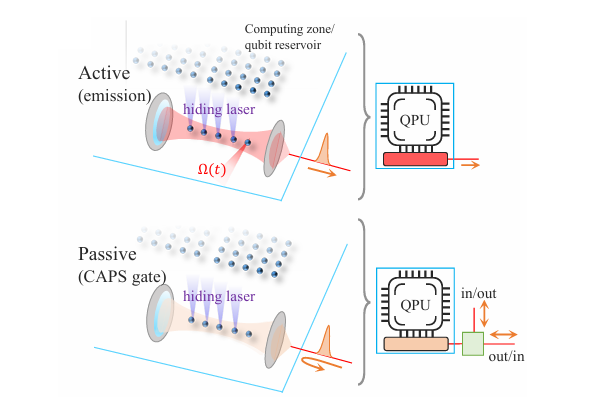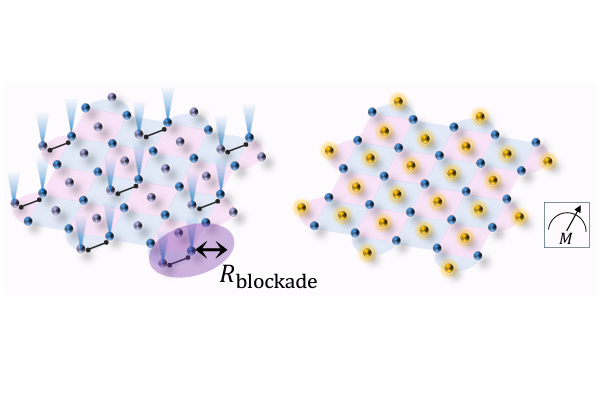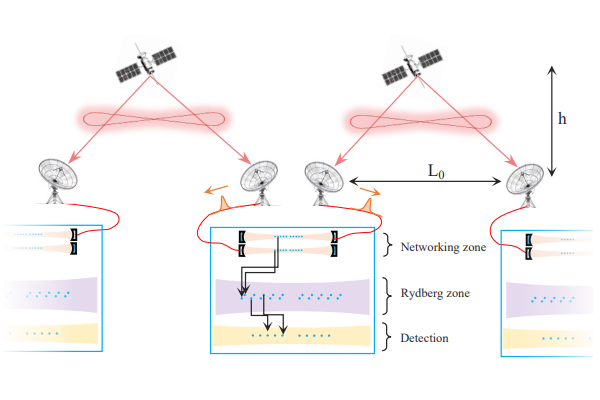Scalable Networking of Neutral-Atom Qubits: Nanofiber-Based Approach for Multiprocessor Fault-Tolerant Quantum Computer

The full paper is at: https://journals.aps.org/prxquantum/abstract/10.1103/PRXQuantum.6.010101
Today, researchers at NanoQT published a perspective paper in PRX Quantum, elucidating the criteria and technological requirements essential for scaling neutral-atom quantum computers beyond a single module via photonic networking links. The team demonstrated how nanofiber optical cavities function effectively as atom-photon interfaces, facilitating the expansion through time, wavelength, and channel multiplexing, and propelling the development of large-scale, multiprocessor, fault-tolerant quantum computers utilizing neutral atoms, nanofiber optical cavities, and fiber-optic networks.
Path to Multiprocessor fault-tolerant quantum computers
Neutral atoms are among the leading platforms for realizing fault-tolerant quantum computation (FTQC), highlighted by recent breakthroughs in executing small-scale quantum algorithms on logical qubits [1]. Despite these advancements, scaling up a single neutral-atom device beyond ~10,000 atoms, a necessity for practical FTQC applications, continues to pose significant challenges. The approach to solving this scalability issue lies in a modular architecture where multiple modules are interconnected through photonic links. This architecture enables intermodule operations through the quantum teleportation of states and gate teleportation at the level of logical qubits, facilitating scalable quantum computation across a broader network.
Photonic networking
The ability to generate remote entanglement across different modules is critical for executing qubit operations across modules. Recent demonstrations using NV, SiV centers [2, 3], ions [4, 5], and neutral atoms in free space [6] have achieved high-fidelity remote entanglement, albeit at a moderate rate, limited by photon collection efficiency. Recent progress of neutral atoms in a free-space cavity has shown record-high atom-photon entanglement generation efficiency through time-multiplexed operations with up to six atoms [7]. However, the atom number capacity in these cavities remains constrained due to the small active area.
Prospect for nanofiber cavity platforms
The state-of-the-art nanofiber cavity platforms, developed by NanoQT researcher, simultaneously achieve millimeter-long cavities and high cooperativity, thus satisfying key requirements for a scalable multiplexed atom-photon interface. Our analysis demonstrates that these nanofiber cavity platforms enable rapid entanglement generation at ~100 kHz across different quantum modules via time multiplexing, allowing for cooperative operation among multiple modules without a compromise in computational speed. These findings suggest a viable approach for building large-scale, multiprocessor, fault-tolerant quantum computers using neutral atoms, nanofiber optical cavities, and fiber-optic networks. The NanoQT team is currently developing telecom-band atom-photon interfaces using Ytterbium atoms, alongside channel multiplexed nanofiber cavity devices. These efforts are aimed at achieving MHz-level entanglement generation rates, pushing the boundaries of quantum network technologies.
[1] D. Bluvstein et al., Nature 626, 58 (2024).
[2] P. C. Humphreys et al., Nature 558, 268 (2018).
[3] C. M. Knaut et al., Nature 629, 573 (2024).
[4] L. J. Stephenson et al., Phys. Rev. Lett. 124, 110501
[5] S. Saha et al., arXiv:2406.01761 (2024).


